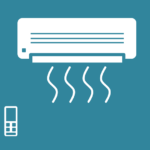Hand hygiene is an essential way to avoid spreading germs and getting sick. A simple act of handwashing can prevent the spread of bacteria, which may cause diseases like cold or flu. It is also an easy way to avoid stomach infections, and other respiratory diseases that are caused by the bacteria transmitted through hand to eye/nose or hand to mouth contact.
The importance of washing hands for good health dates back to less than two centuries. You accumulate various germs as you touch people and objects around you throughout the day. The same hands may become a cause of infection if they get in contact with your mouth or nose. Although it is not possible to keep hands completely germ-free, frequent hand wash practice fulfils the purpose to an extent.
Steps for Hand Washing
- Wet your hands with clean water whether warm or cold
- Apply handwash
- Lather your hands by rubbing them properly between fingers, thumb and on both side of your palms
- Scrub your hands for 20 seconds
- Wash your hands properly with clean water
- Pat dry your hands with an air dryer or a clean towel
If your hands are greasy or dirty, you must use warm water as it will effectively remove the grease from your hands. These steps for hand washing are easy to practice and include in a routine, which will eliminate the chances of getting sick by germ transmission.
When Should You Wash Your Hands?
Steps for hand washing must be followed before and after the following activities:
Wash hands before:
- Preparing food
- Eating
- Treating wounds
- Caring for a sick person
- Inserting or removing contact lenses
- Touching a patient
- Antiseptic procedures
Wash hands after:
- Preparing food
- Using the washroom or changing a child’s diaper
- Touching an animal or animal waste
- Blowing your nose, coughing, or sneezing
- Treating wounds
- Caring for a sick person
- Handling garbage
- Contacting a patient or its surroundings
You can practice hand washing steps with your children to make them learn the proper process. Adopting these habits at an early stage of life will help them maintain good health. If your child is unable to reach the washbasin area, help them by providing a stool.
How to Wash Hands Without Water and Soap?
There are many places and situations when clean water and soap are unavailable. While washing hands with soap and water is the best-known way to avoid germs, Dettol hand-sanitizer does the trick as well. Hand-sanitizer ensures that you have clean hands even when you are on the go. It not only is effective, but also easy to carry as it fits your pocket or bag with ease.
Steps to using a hand sanitizer:
- Apply hand sanitizer on one palm
- Rub your hands between your fingers and thumb
- Keep rubbing until sanitizer dries out in your hand
A Simple Way to Stay Healthy
Proper hand hygiene in healthcare is an integral part to prevent infections. It offers great rewards in return in terms of better health, which safeguards your family’s health and you. Inculcating steps for hand washing in your regular hygiene routine can keep you safe from any germ transfer from touching objects, water, and air. One of the best handwash soap and sanitizers useful by Dettol, which is effective in eliminating bacteria causing various diseases.
Make sure you use anti-bacterial products like Dettol Handwash, that ensure that your hands are free of any impurity. When it comes to hand sanitizers, supervise your children and teach them the correct way of using it for a healthier future
Related Posts












